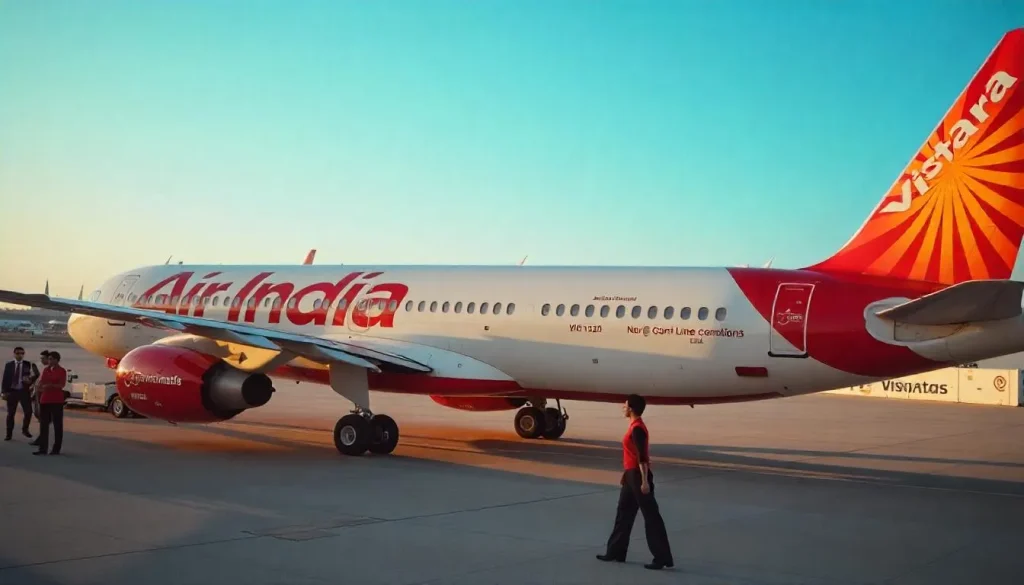Tata Group stands to gain significantly as Air India (AI) and Vistara (UK) merge, marking the start of a new journey. Vistara’s final flight on November 11, 2024, signals the beginning of this transformation, which is expected to deliver substantial financial benefits.

Financial Gains from the Merger
According to reports, the merger could lead to annual savings of over ₹500 crore. These savings will come from renegotiated contracts in key areas such as operations, fuel, lounges, ground infrastructure, and catering. By FY27, the combined airline aims to achieve total cost savings of ₹1,800 crore.
Vihaan.AI Strategy in Action
The merger aligns with Air India’s five-year “Vihaan.AI” transformation plan. Having completed the initial “Taxi” and “Take-off” phases, the airline is now in the “Climb” phase, focusing on full integration with Vistara, enhancing customer value, and improving profitability.

The “Road to Profitability” strategy targets achieving profitability by FY27. The merger will streamline operations, reduce redundancies, and enhance cost efficiency, enabling the airline to better manage industry challenges like fluctuating fuel prices and stiff competition.
Strengthening Market Position
Both Air India and Vistara have struggled with profitability. However, their combined domestic and international networks offer a stronger competitive edge. The merger allows for bulk procurement, leading to improved cost efficiency across operations.
With Singapore Airlines holding a 25.1% stake in the merged entity, its expertise will play a crucial role. SIA’s experience in managing world-class full-service carriers could provide a strategic advantage.
Ensuring a Smooth Transition
Air India has assured passengers that the Vistara experience will be preserved. The integration includes upgrading Air India’s narrowbody fleet, a process set to complete by mid-2025.
The merged entity will also optimize route operations. For example, Air India will cease competing on routes like Delhi to Hong Kong but continue service through Vistara. Similarly, Air India Express will focus on bringing passengers from smaller cities to metro hubs, feeding into Air India’s metro and international routes.
Future Outlook
The merger creates India’s sole full-service carrier, eliminating internal competition. This streamlined approach is expected to drive profitability and support future investments in fleet expansion, customer service, and technology.
While the goal of profitability by 2027 is ambitious, industry experts believe that with operational optimization and strong management, the merged airline can achieve sustainable growth.
